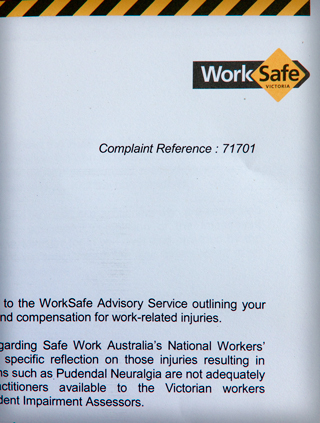
I had my doubts about contesting my impairment score of 0% (that was deemed permanent I might add), as I am very well aware and have ranted aplenty about Chronic Pain NOT being acknowledged in the guidelines that are used to assess injured workers. That means there is Australian legislation (I’ll rephrase; it is legal) for WorkSafe practitioners to ignore Chronic pain, thus Pudendal Neuralgia. No where within the system will any WorkCover practitioner be able to assess an injured worker’s Chronic pain. I’m experiencing the result of this, I’ve been living this ignorance since March 2007.
I wrote a letter that was ignored for a few months by our WorkCover Minister, WorkSafe and SafeWork Australia. The Victorian Ombudsman employee informed me not to use the ‘info’ email address but rather the ‘enquiries’ one when I’m writing to WorkSafe. Ridiculous but he was right and I eventually received a response.
(Enter sarcasm) I now feel completely healed and completely relieved with the empty response I received. It managed to ‘acknowledge’, ‘agree’, ‘assure’ and confirm all the points relating to this outdated system that I initially made in my letter. I’m also more at ease knowing everyone who assessed me ignored all my symptoms and inabilities and that was legal. I’m also proud of the staff at WorkSafe who are happy to abide by ignorant and narrow-minded measures that would also apply to them in the event they injured themselves at work. Above all, I’m in awe of the WorkSafe staff and all related employees and practitioners who’s reports are so loyal and discerning of these out-of-date AMA4 guidelines (with pain chapter removed), and The Accident Compensation Act 1987.
This template response clearly indicated to me that anyone with chronic pain and with any of the following symptoms/limitations, as a result of a workplace accident will not get compensation: affected toilet function, spasms where you really don’t want them, sensory pain (in my case throughout the pelvis), toothachey nerve pain, weakening legs, burning, zinging, if you have limited sitting ability, if you are limited in walking, standing, working, lifting, bending, exercising, if you have an implant as a result of pain (or even if you need one for that matter), if you rely on daily help, if you can’t drive, shop, sit and type this damn email in one hit etc etc…!
Well thank you WorkSafe for the ‘quality‘ protection you promise. And Heidi just one question, would this letter have been acceptable for you if you were in my shoes?
222 Exhibition Street Melbourne VIC 3000
GPO Box 4306 Melbourne VIC 3001
Tell 03 96411555 Fax/ 03 96411222
worksafe.vic.gov.au
3 July 2013 Complaint Reference : 71701
Ms Soula Mantalvanos
Dear Ms Mantalvanos
Thank you for your email dated 6 June 2013 to the WorkSafe Advisory Service outlining your queries and concerns about the assessment and compensation for work-related injuries.
In particular, I note your direct questions regarding Safe Work Australia’s National Workers’ Compensation Action Plan, as well as your specific reflection on those injuries resulting in chronic pain and the observation that conditions such as Pudendal Neuralgia are not adequately understood or assessed by medical practitioners available to the Victorian workers compensation scheme as accredited Independent Impairment Assessors.
Your willingness to share your clinical journey of what I understand to be a very complex injury on your website is also acknowledged.
Safe Work Australia
Safe Work Australia is a national policy body, not a regulator of workers compensation. lt is an organisation separate to that of WorkSafe Victoria.
Safe Work Australia works with the Commonwealth, State and Territory governments to improve work health and safety and workers’ compensation arrangements. The Commonwealth, States and Territories have responsibility for regulating and enforcing work health and safety laws, and administering workers’ compensation legislation in their own jurisdictions.
In 2010 Safe Work Australia Strategic Issues Group (SIG) developed the National Workers’ Compensation Action Plan 2010 – 2013, which included· a proposal to investigate and report on options for nationally consistent arrangements for the assessment of permanent impairment.
As Safe Work Australia leads the development of the proposed Action Plan, it is suggested that for information on the status of the plan, you may wish to contact Safe Work Australia on info@safeworkaustralia.gov.au or call 1300 551832.
Impairment Assessment in Victoria
The Accident Compensation Act 1987 (the Act) instructs how permanent impairment resulting from injuries sustained in the workplace are assessed and compensated for workers in Victoria.
The Act requires assessments of physical injuries to be made in accordance with the AMA Guides to the Evaluation of Permanent Impairment, Fourth Edition (AMA4 Guides, the Guides) The Act also instructs where exclusions apply. In confirmation of your comments, in Victoria, the chapter in relation to the assessment of pain under the AMA4 Guides is currently excluded by law. In general, the Guides considers an allowance for pain is reflected in the descriptors already assigned under the existing specific body system assessment methodologies, and a separate assessment would result in a duplicate consideration of the one symptom.
The Act also requires assessments to be conducted by medical practitioners who are accredited as Independent Impairment Assessors by their successful completion of the Impairment Assessment Training Course as approved by the Minister for WorkCover and provided by the AMA Victoria. Of note, is the requirement that these practitioners are also independent of an injured worker’s treatment or medico-legal service provision.
Your assessments have been provided by doctors who have been selected appropriately to the clinical nature of your injury as well as meeting the accreditations and independence required by law.
I acknowledge your comments in preference of your treating practitioners’ services as assessors.
The AMA4 Guides require that any assessment of impairment must include the full and complete review of all background medical information relevant to the injury; clinical opinion, diagnostic and investigation information, treatment and rehabilitation details as provided by involved clinical treatment providers. While independence has been properly maintained throughout your claim for the selection of medical practitioners for impairment and Medical Panel assessments, please be assured the assessments provided placed significant importance on your primary treatment providers’ reports as received as part of the impairment assessment and Medical Panel referral.
I would agree that each assessor acknowledged the complexity of your injury and the clinical journey you have experienced.
Thank you for your balanced reflection on the challenges faced by the assessors.
Thank you for raising your concerns directly with WorkSafe Victoria. I hope that this information has been of assistance, but if you have any further queries please don’t hesitate to contact me directly.
Yours sincerely
Heidi Fitzgibbon
Impairment Benefit Coordinator Agent Management Division Phone: 96411211
Email: Heidi_Fitzgibbon@worksafe.vic.gov.au
For anyone wanting to help change this system, please sign the current petition here and/or pledge here.


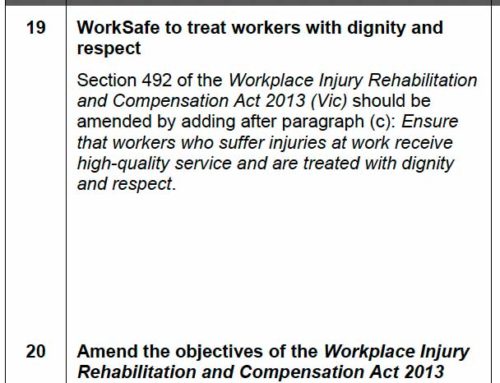
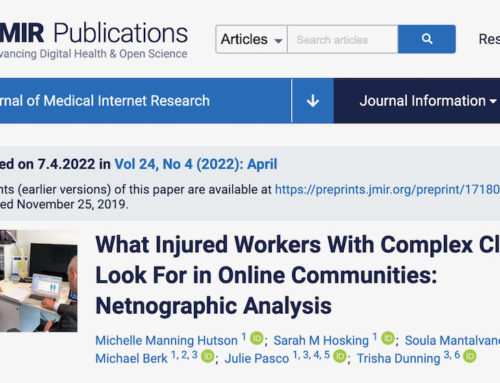



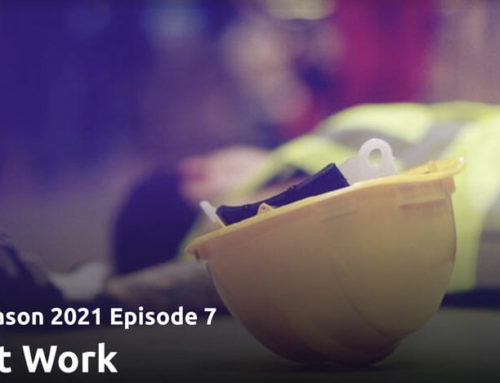

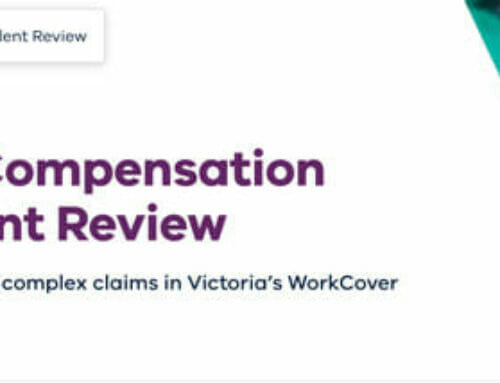
And I signed off with this:
Dear Heidi,
Thank you for providing the email for SafeWork Australia but that’s where all this back-and-forth started. I don’t blame you if you can’t recall.
And there’s no point looking into ‘judicial review’ when the legislation is being so properly conducted in my case.I’m not that much of an advocate!
So I guess we managed to achieve two things from all these emails: that you’re exceptional in your role at WorkSafe and I have been respectfully acknowledged for my advocacy.
Oh yes, and we certified one more thing. That my daily pain and all my limitations amount to 0% impairment for WorkSafe.
Pretty poor,
Soula Mantalvanos
And Heidi replied:
Dear Ms Mantalvanos
SafeWork Australia query
I am not advised of any specific detail regarding the National Impairment Assessment Guidelines I am afraid – other than their development and wish to provide for consistency across states. The opportunity for public review and comment is dependant on the process SafeWork Australia require and they may be able to answer this query directly for you – their contact follows;
email info@safeworkaustralia.gov.au
phone 1300 551 832
Review of Medical Panel
The legislation directs currently that a Medical Panel opinion is considered final and binding. Judicial review is possible following a Medical Panel opinion but advice in this regard must be provided by your legal representatives and does not form part of the Accident Compensation Act 1985.
Unfortunately I can only try to assist based on the rules within the current Victorian workers’ compensation legislation but your advocacy regarding need for change is respectfully acknowledged, as well as provided to WorkSafe Victoria Safe Work Australia representatives.
Kind regards
Heidi
And after contact from the Ombudsman I received a reply:
Dear Ms Matalvanos – please accept my apologies for this oversight. My subsequent reply to you was not sent correctly, and I failed to check my assumption it was provided on 30/7/13. The original delay resulted from time taken to seek a further comment regarding the progress of the National Guides from SafeWork Australia. The intended email follows.
My apologies again
Heidi
30/7/13
Dear Ms Mantalvanos
Thank you for your patience as I sought a further comment via WorkSafe Victoria representatives from SafeWork Australia to augment my response to your further queries.
“Safe Work Australia has developed a National Guide to the Assessment of Permanent Impairment (National Guide) aimed at creating nationally consistent arrangements for the assessment of permanent impairment. The National Guide is yet to be considered by Commonwealth, state and territory Ministers with responsibility for workplace relations. If Ministers endorse the National Guide, jurisdictions will decide if and when to implement it”
NO further advice is possible in relation to timeframe for this action at this point.
As previously advised, the legislation requires that an assessment of impairment is undertaken in accordance with AMA4 Guidelines (and for psychological injuries the Guide to the Evaluation of Psychiatric Impairment for Clinicians (GEPIC). This was undertaken in your case in relation to your accepted injuries at both the impairment assessor and Medical Panel stage.
Unfortunately there is no provision for a senior review to be undertaken of your impairment other than a review by the Medical Panel (which you have already exercised). WorkSafe apologies that you were advised that there was an option of a senior review.
Your comments with regard to 1985 are noted.
Kind regards
Heidi
Yep, I replied:
Hello Heidi,
Thank you for your email and apologies. I understand this matter is far from straight forward.
Did SafeWork Australia mention whether the proposed National Impairment Assessment Guide deliberately excludes pain as being an assessable impairment? And will the Guide be made available for public comment?
On the Medical Panel matter I believe I may be able to dispute the medical expenses decision (and have attempted to contact Bill Dimas, the conciliator who was helping me with that dispute end of 2011) but in future will there be provision for a senior review process in the event that a medical review panel fails to reach a diagnosis that accords with the relevant section of the Guides?
I hope you can understand my search for these answers Heidi. I feel like no progress will be made if the governing powers continue to communicate between them without an injured worker’s opinion. Without my communication I feel WorkSafe (and other associated bodies) are not going to know the impact of the current and primitive system. And I know WorkSafe conduct surveys but with the limitations I point out, what’s the point of the research? Isn’t it better to rectify these issues first? It should be obvious changes like the ones I’m outlining would help an injured worker find proper treatment and make it back to work.
Regards
Soula Mantalvanos
Me to Worksafe again:
Thank you for taking the time to better understand my issue and injury.
I understand the information your provided in your reply but I am still left feeling there are two outstanding issues which relate to my belief that I was never fairly assessed.
1. The failure of the medical examiners and the Medical Panels to properly consider a neurological diagnosis of my compensable condition – pudendal nerve pain – which would be entirely in accordance with the AMA Guides IV. This is not a system problem but one of apparent medical unawareness of the particular content of the Guides.
2. As psychiatrists have been given the role of assessing psychological “impairment”, why didn’t WorkCover not utilise the expertise of a Pain Medicine physician to similarly assess the “impairment” that accompanies my chronic pain?
I have sent the same letter I addressed to you to my case manager and he replied:
“There is nothing we can do at this stage, the best thing to do is to apply for a senior review.” I assumed a senior review is the same assessment method i’ve already had. Please correct me if you think a senior review may be more accurate in diagnosing my injury, pudendal nerve pain. Otherwise what are my options other than heading back to the Ombudsman’s service for dispute resolution.
I also have to point out how hideous the use of words, ‘current’ and ‘1985’ are in the same sentence. I would love for you to pass that statement on to WorkSafe Victoria and Safe Work Australia (who I might add still have not replied to my initial letter).
Regards
Soula Mantalvanos
I did not get a reply after two follow up emails seeking a response. I called the Victorian Ombudsman who followed up for me….
And then I replied again after calling the Victorian Ombudsman:
Hello again Heidi,
I’ve just had a phone conversation with a representative from the Victorian Ombudsman’s office and I’m hoping you can answer a few questions for me. I can’t help but have many niggling issues and have to get them clarified. It’s very difficult to be left in this state without acknowledgement or explanation.
You wrote in the letter that the examiners had taken into account my provided information but yet I don’t recall them noting my inability to drive, sit with ease and without pain, stand or walk without a limit, lift anything from 1-5 kilos (depending on the day), having toilet signals that don’t work, etc etc.
Is this not something that is measured with impairment? How can an injured worker lose their ability to sit without pain or drive or lift and have no impairment?
Can you please clarify? Which part of the legislation allows this ignorance?
Regards
Soula Mantalvanos
Worksafe’s reply:
I am more than happy to try to help, Ms Mantalvanos. I apologise for the delay in my reply.
The reports I was able to review to better understand your most recent correspondence certainly referenced some of the disabling impacts you have described in combination with the medical and clinical examinations & findings regarding your impairment.
The decision to base a lump sum compensation entitlement upon ‘impairment’ and not ‘disability’ has been one taken by the Victorian government, with the Impairment Benefit and its impairment assessment requirement enshrined in the current legislation – Accident Compensation Act 1985 – section 98(c) and section 91(1) respectively.
An Impairment Benefit within the Victorian workers compensation jurisdiction is intended to compensate injured workers whose workplace injuries result in permanent impairment, and the way permanent impairment is assessed is via the AMA Guides to the Evaluation of Permanent Impairment (Fourth Edition) . The Guides view impairment as a deviation from normal in a body part or organ system and its functioning, and provide a medical assessment approach, as opposed to one solely based on functional impacts. Where that permanent impairment may be psychological in origin, the Guide to the Evaluation of Psychiatric Impairment for Clinicians (GEPIC) is relied upon and the assessment formed by consultant psychiatrists clinical review. I acknowledge your strong concerns about the adequacy of what is assessable under the Guides in accordance with the legislation.
Disability is considered within workers compensation and forms the basis of decisions regarding entitlements to weekly benefits due to changed work capacity, medical and like treatment services, return to work supports and any common law entitlements if there is a party at fault upon which upon which to sue for damages (pain and suffering, and economic loss).
While I am not in a position to advise you on specific aspects of your claim, you may wish to seek advice from your legal representative, Shine Lawyers, or via your WorkCover Agent.
Your advocacy in this area is respectfully acknowledged and continues to be advised to WorkSafe Victoria’s representatives to Safe Work Australia.
I acknowledge this will not be a satisfactory answer to your complex situation but I hope some of this information may be of assistance in some small way.
Kind regards
Heidi
And my email response directly to Heidi:
Dear Heidi,
Thank you for replying to my complaint.
I doubt you will be surprised by my email if you did in fact look into my injury and obtain an understanding of the severity of it. I’m also not surprised by your letter, it’s clear where we all stand in this system and my place is certainly not a good one: sever health issue, no income, no medical benefits all from an injury that can’t be acknowledged for impairment.
I’m sure we can agree that your response wouldn’t be good enough for you if you were in my shoes. Thankfully there are a few individuals, such as John Quintner who I believe wrote to you, that are doing their bit to support injured workers in my situation with the hope of bringing on change in the legislation and assessment methods.
My post about your reply is online here if you wish to see it: https://pudendalnerve.com.au/2013/07/07/reply-to-my-fair-assessment-for-compensation-letter/
Regards
Soula Mantalvanos
WorkSafe’s reply:
Dear Ms Mantalvanos
Thank you for your email reply to my letter.
I can confirm I did receive an email from Mr John Quintner as you have advised. This correspondence has been provided today to WorkSafe Victoria’s representative to Safe Work Australia.
Kind regards
Heidi